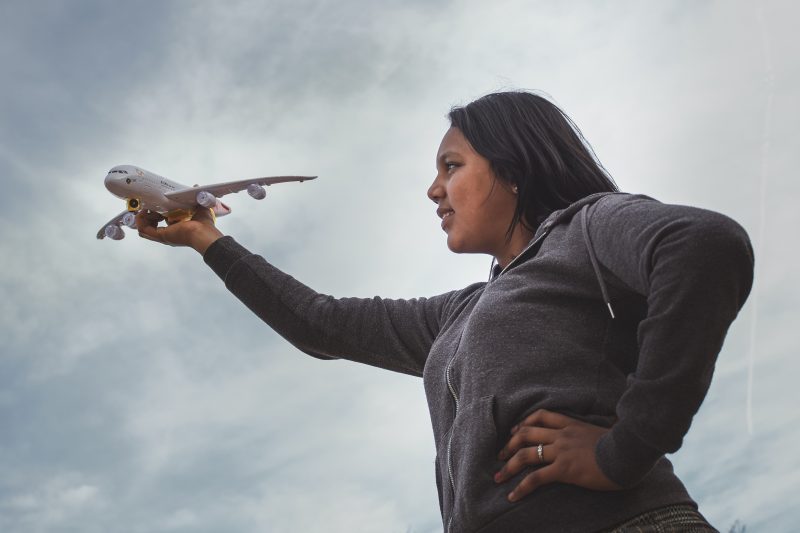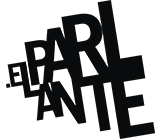
The students of the reception classroom of the Vall d’Hebron Institute have carried out the Synchronize project, energized by the entity elParlante, to work on their migration processes through photography.
By: Victòria Oliveres
When the educators of elParlante asked a group of students in a reception classroom to bring an object that was representative of them, Julia immediately had it clear: a miniature plane. “I chose it because it’s the means of transport I used to move back in with my mother,” says the 14-year-old. Julia’s mother migrated from Honduras to Barcelona and it was not until two years later that she was able to take her husband and children to the Catalan capital.
This migratory process marked Julia, like many of her classmates in the reception classroom of the Vall d’Hebron Institute, although they do not talk about it very often. For this reason, elParlante wanted to carry out the Synchronization project, which works on the reality of migrations through a photography workshop. “We felt that emotions, migrations and grief are not worked on much in the classroom, although it is the natural place where these issues should be addressed”, explains Alfredo Cohen, coordinator of elParlante.
During the workshop, which was carried out by twelve students over two months, they learned how to operate a camera and also the photographic techniques to make portraits and self-portraits. From there, the proposed challenge was to photograph themselves with an element with which they felt a bond. “We asked them to bring an object that identified them, without ever talking about migration, but the vast majority of the students brought objects that, more or less clearly, were related to their migration process”, explains Pancho, one of the educators who carried out the project.
Each student presented to the group the object they had brought and with which they would later be photographed. “At first it was a bit difficult to focus on the project, but when we gave them the cameras, the attitude already changed, because they understood that they could take advantage of it”, explains Marta, audiovisual technician at elParlante. “It was a very chaotic group but when they came and explained their experience with the object, everyone was attentive and sincere,” adds Pancho.
“I expected something simpler, but I am very proud of everything we have achieved”, explains Julia, “the most difficult thing has been to open up to others, to show who I really am”.
Precisely the idea of elParlante’s methodology lies in making technological devices instruments for storytelling. “And storytelling helps bring out our emotions and make us realize that other people are going through the same processes,” Cohen says. “The camera alone does not generate empathy, but it is an excuse to organize stories that end up connecting people,” she adds.
Now, the photographs taken by the students will be exhibited at the school and the resulting videos of the project will be passed through the different classes. “At first I respected the fact that I saw it at school, but now I have understood that this way people will be able to know me as I am”, says Julia. Another aim of the project is for everyone to be able to listen to the stories of these boys and girls and this “favours communication and breaks down clichés and stereotypes”, says Pancho.
No space to work on migratory grief
“In the reception classroom there are young people from very different realities by teachers who – with all the will they have – do not have the tools or time to face their emotions and experiences with the care they need”, explains Alfredo Cohen. Sandra Monfort, social educator at the school, agrees with him: “they have to have a space where they can elaborate on what it means to come from another country and meet other classmates who have gone through the same process”.
“Sometimes we try, but the reception classroom has to be there for all academic issues”, adds Paola Acuña, tutor of this classroom. “But here they have had space to speak out loud about the fact that they are all immigrants, which is something that does not happen in high school because they want to integrate quickly, to be like the others.”
Knowing the work they did in El Parlante, from the institute they contacted them to work on the needs of a center like theirs, where there is a lot of living enrollment and many newly arrived teenagers. They have managed to fit this project into the ‘full-time institute’, that is, it is an activity that takes place outside school hours but within the spaces of the institute.
“My hope is that the administrations do not forget that we have this type of student body and that we do not run out of budget, because it is very important”, says Acuña. “Many people complain that migrant teenagers have no way out, but maybe if we invested more in their reception, then they would see more clearly that they could have a bright future like so many others.”
“Fotografiar-se para compartir el dol migrori” was originally published, in Catalan and Spanish, in Catalunya Plural and the Diari de l’Educació.
